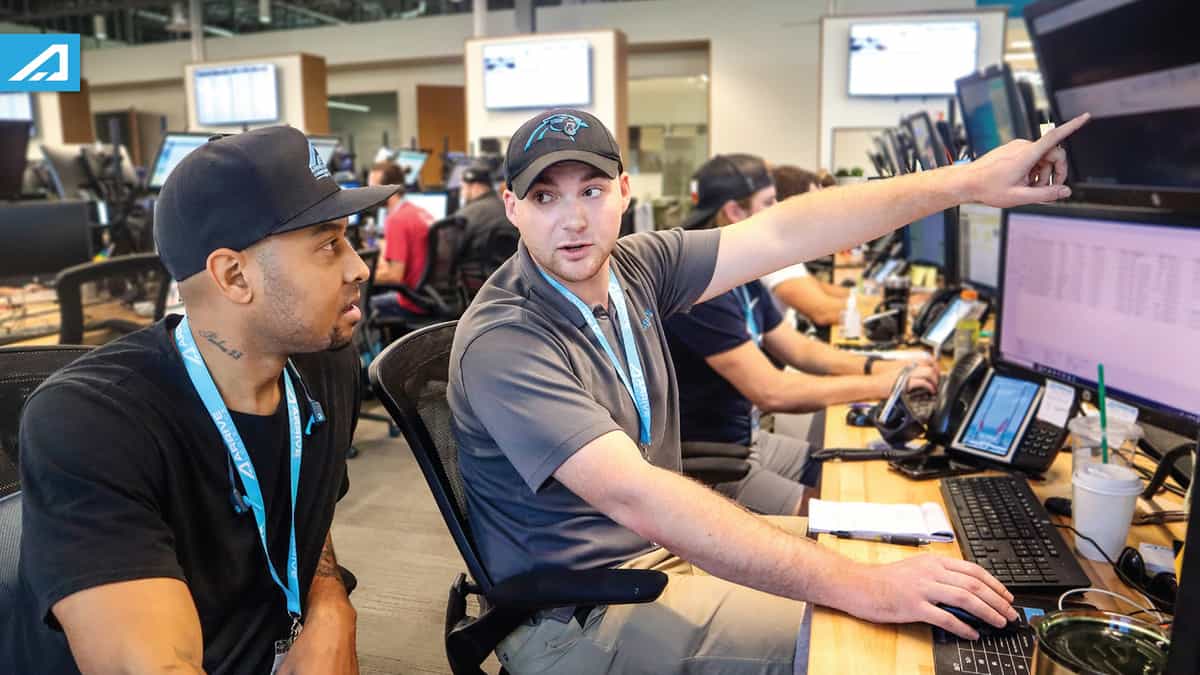


“If a tree falls in a forest and no one is around to hear it, does it make a sound?” is a philosophical thought experiment that raises questions regarding observation and perception, according to Wikipedia. In a nutshell, this philosophical question forces us to think deeply about perceived existence. If we believe something is a certain way, then it is and vice versa. Many times throughout history, people and organizations have found new ways to describe old things. The terms “reinvent the wheel” and “build a better mousetrap” challenge us to consider whether or not a better design or solution even exists. Similarly, business models are often repackaged in a way that makes them seem new and different, despite being akin to established models without much change at all. In the world of supply chain and logistics, we are seeing a similar perceived shift as digital brokers proliferate and enjoy stratospheric multiples and growth levels.
Freightquote.com was perhaps the first digital broker, taking less-than-truckload (LTL) pricing and booking online in 1998. Within five years, GlobalTranz and Echo Logistics launched similar platforms and the race was on to digitize the supply chain. In the late 2000s and into the 2010s companies like Command Transportation and Coyote Logistics famously created technology that enabled their brokers, creating tremendous operating efficiencies and competitive advantages, also creating lucrative exits for both companies. In more recent years, Cargomatic became the first “Uber for Trucking,” launching in 2013 to much fanfare while Uber was barely figuring out its black car services. Cargomatic was followed quickly by Transfix, NextTrucking, Convoy, LoadDelivered and eventually Uber Freight, whose mission was to fully digitize the brokerage business.
Many people believed, and probably still do, that to be a digital broker, a company needed to build every last piece of software a brokerage used and eliminate all human interaction with an order. More realistically, many of the firms listed began their digital offering with a driver app that automated dispatch, tracking, and document retrieval, and eventually automated carrier settlement and payment, all through a single app. This full-stack approach has fueled significant venture capital investment and has propelled companies like Convoy and Uber Freight into revenue thresholds never before seen in the brokerage space. At their core, these digital brokers’ business models are not fundamentally different from the original brokers C.H. Robinson, American Backhaulers and others. However, the way these firms are executing transactions and conducting business is different from the legacy brokers and the results are proving it.
According to Google, the word “digitization” can be defined as “the conversion of text, pictures or sound into a digital form that can be processed by a computer.” In logistics workflow terms, this can take many forms. There are many technologies and applications that can be used to digitize any logistics business and many can be deployed without using software developers at all. “No code” solutions make it easier for firms to digitize their workflows and ultimately become digital brokers. More recently, companies like Arrive Logistics, Archerhub and Opus9 have transcended the traditional brokerage manual workflows while positioning themselves to be viewed as “digital brokers” despite not having the standard venture-backed, growth at all cost model leveraged by mainstream digital brokers like Convoy and NextTrucking.
Despite all of the investment and attention going into the new breed of brokers, the incumbents haven’t stood still watching their market share erode. In fact, the opposite has been true. J.B. Hunt and C.H. Robinson have probably done the best jobs of re-inventing themselves. J.B. Hunt was recently recognized as the fourth-most innovative company in logistics by FreightWaves, placing fourtth in the FreightTech25 for 2020. C.H. Robinson ranked ninth in this year’s standings and credits the impressive growth of its price per share over the past several months to its investments made in technology. UBS conducted a study recently on the U.S. truckload brokerage market and both C.H. Robinson and J.B. Hunt were among the top firms based on number of app downloads.
In summary, while digitization was perhaps the most overused term in supply chain in 2019, it is less of a destination than it is a journey. As well-funded new entrants come into the brokerage space, all brokers should be working on digitizing their manual workflows and bringing their businesses into the future. The brokers who are not thinking about technology have probably already gone the way of the dodo bird or likely will soon. Above all, freight is going digital and there’s nothing that will get in the way of it and the reality is if a broker is making investments into digitization, it will eventually become a digital broker.
Original article posted here: https://www.freightwaves.com/news/commentary-what-is-a-digital-broker